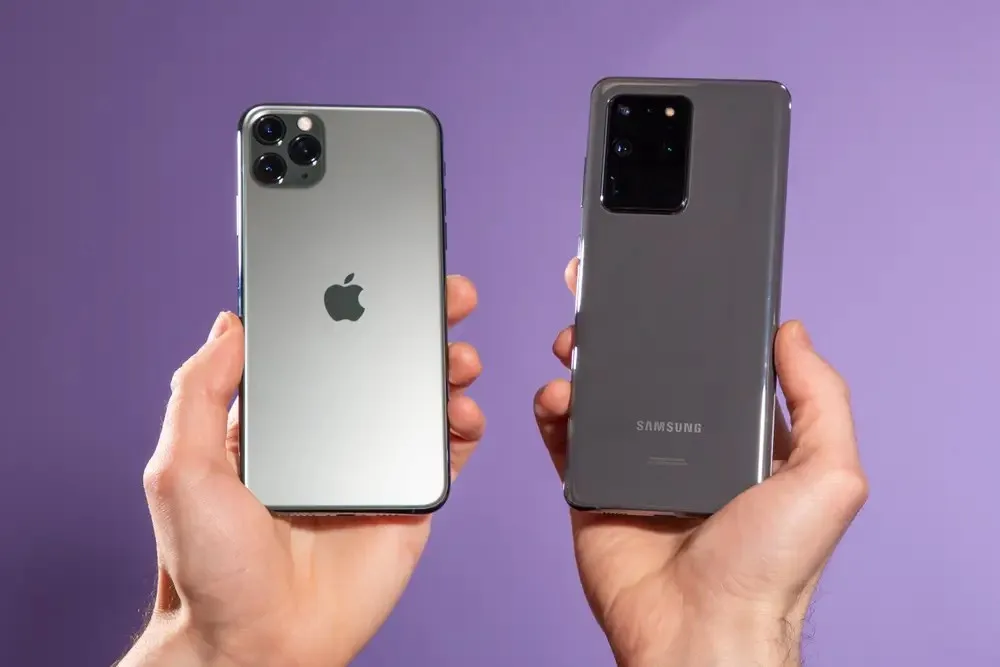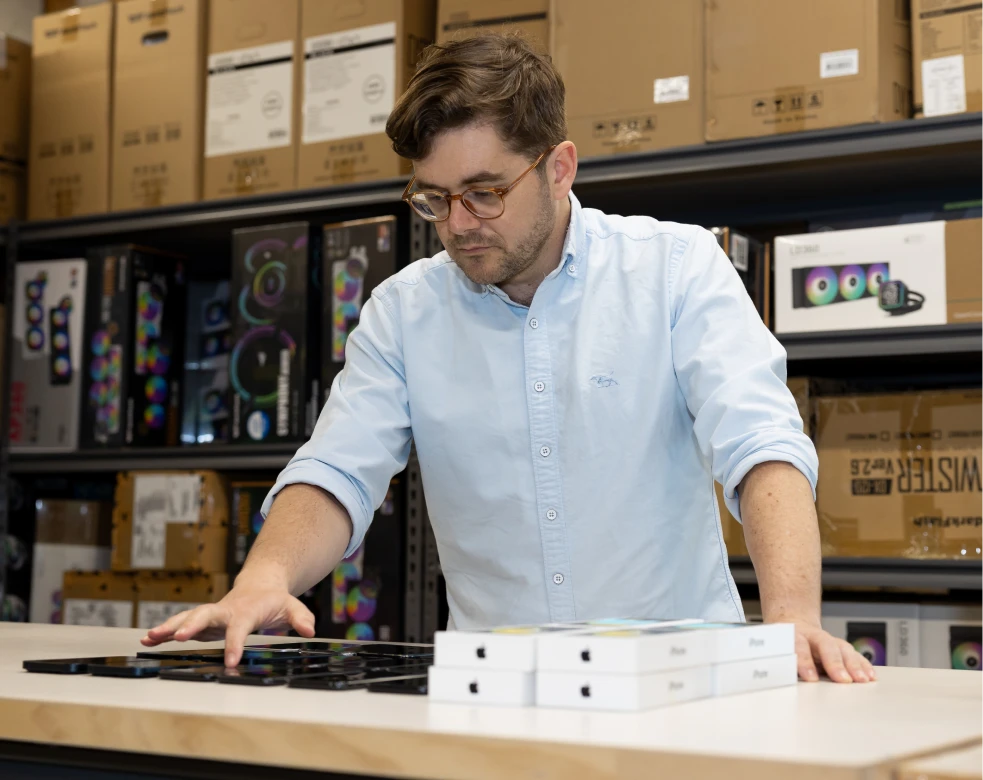Android vs iPhone Resale Value: Which Holds Its Value Best?

If you’re planning to sell your old phone, or upgrade and factor in trade-in value, one question looms large: Which phone type gives you better resale value – Android or iPhone? In this article, we break down the data, explore why the gap exists, and show how this knowledge can benefit you here in New Zealand.

Key Resale Value Data Points
Here are some of the most compelling statistics:
- According to resale and trade-in data: after four years, iPhones retain around 52.5% of their original value, while flagship Androids drop to about 21.1%, and budget Androids to just 12.2%.
- A recent blog from ecoATM states: after 12 months, an average Android phone is worth about 43% of the original purchase price, whereas an iPhone retains about 69%.
- As reported by TechRadar: In a survey, 41% of iPhone owners turned their handset into money (sell or trade) vs only 17% of Android owners — indicating stronger resale behaviour and market demand for iPhones.
- From NZ-specific data via BusinessDesk: The iPhone 13 family lost on average 13% of its value over 16 months, while the Samsung Galaxy S21 range lost 41% over 24 months.
- In a white-paper cited by Apple Inc. via 9to5Mac: iPhones retain at least 40% more of their value compared to Android smartphones, with the gap increasing for older models.
Bottom line: iPhones hold their value significantly better than Android phones, both globally and in NZ-centric comparisons.
Why Do iPhones Hold Value Better?
Several structural and market factors contribute:
1. Longer software & update support
Apple devices typically get 5-7 years of major iOS updates; many Android manufacturers offer 2-4 years (though this is improving). The longer a phone receives updates, the more attractive it remains on the second-hand market. ecoATM+1
2. Controlled supply and fewer models
Apple releases fewer models per year; Android manufacturers release many across premium, mid-, budget tiers. With more Android models competing, older ones devalue faster due to supply saturation.
3. Strong resale demand and brand perception
iPhones enjoy higher demand in the second-hand market. Buyer confidence, easier repair/parts availability and resale infrastructure all support higher value.
4. Better retention of premium features and build quality
Premium iPhones tend to remain relevant for longer – good design, high-end specs, and Apple’s ecosystem help preserve value. Android flagships may have top specs but also depreciate faster.
What This Means for NZ Sellers (and Buyers)
Here’s how you can translate this into actionable insight for the NZ market:
- If you own an iPhone and plan to sell or trade-in, you’re likely to regain more of your original cost than if you held a comparable Android.
- If you hold an Android, consider selling sooner rather than waiting – the depreciation curve is steeper.
- When choosing your next phone, factor in resale value: the up-front cost plus the “what you’ll get back” value = the real cost of ownership
Practical Tips to Maximise Resale Value (Both Platforms)
Regardless of platform, resale value still depends heavily on condition, timing and model. Here are tips:
- Time your sale: As we’ve discussed previously, selling before major model releases is key.
- Keep device in good condition: Minimum damage, good battery health, original box/accessories.
- Unlock the phone / ensure it’s ready for resale: Carrier unlocked status helps, especially in NZ where buyers appreciate flexibility.
- Sell when demand is higher: For example pre-school, post-holiday, or when supply is lower.
- Choose a trusted reseller: A service with strong NZ presence (like SellMyCell) helps you get fair value quickly.
Final Word
If you’re evaluating “Which holds its value better?” the data is clear: iPhones outperform Androids in resale value by a substantial margin. That doesn’t mean Android is a bad choice – depending on your budget and needs, it may still make sense – but if resale value is part of your decision, it’s an edge that iPhone brings.
For anyone in NZ looking to sell, upgrade or simply understand their device’s worth, being aware of these platform-value differences is smart financial planning.
Still not sure about something?
The Hidden Cost of Letting Old Phones Sit in a Drawer

Most Kiwis have at least one old phone sitting in a drawer. Some have three or four. It feels harmless, even kind of smart, to keep old devices “just in case.” But what most people don’t realise is that storing unused phones actually costs you money, time, and the planet more than you think.
Here’s what really happens when you leave that old iPhone or Samsung buried in a junk drawer.

1. Your Phone Loses Value Every Month
Smartphones depreciate. Fast.
Even if your old phone still works perfectly, the longer it sits:
- The older the model becomes
- The less buyers want it
- The more its resale value drops
On average, phones lose:
- 15–20% of their value every year
- A big drop every time a new model launches
- Even more if the battery weakens from non-use
A phone worth $350 today might be worth $180 next year – purely because it sat untouched.
Letting it “age in place” = losing free money.
2. Batteries Don’t Like Being Ignored
Most modern phones use lithium-ion batteries, which degrade even when unused.
When they sit for months:
- Battery health drops
- They become harder to charge
- They may not power on at all
- Replacing the battery often costs more than the resale value
A phone that could’ve been sold for $250 can become a $0 device if it won’t turn on.
Even worse, swollen batteries can become dangerous if left for years.
3. Old Phones Become E-Waste (Even When You Think You’ll Use Them)
We all say the same thing:
“I’ll keep it as a spare.”
“I might need it for travel.”
“I’ll give it to the kids later.”
But the stats say otherwise:
Most “spare” phones are never used again and eventually end up in a landfill.
When phones break down in the wrong place, they leach harmful materials into soil and waterways. Recycling and refurbishing them instead:
- Recovers gold, aluminium, and rare minerals
- Reduces demand for new resource extraction
- Gives your tech a second life
- Keeps NZ cleaner and greener
You’re not just decluttering a drawer. You’re reducing waste.
4. Security Risks Increase Over Time
Phones that sit unused:
- Stop getting iOS/Android security updates
- Become vulnerable to data breaches
- May still contain photos, emails, saved passwords, or messages
Even if you think you’ve wiped it, many people miss:
- iCloud/Google accounts still attached
- SIM cards left inside
- Social media accounts not fully logged out
- Bank apps that weren’t removed
The older the device, the riskier it becomes to leave personal data on it.
5. They Could Be Working for You Instead of Collecting Dust
This is the part people forget: Old phones are still valuable and in NZ, demand is high.
Whether it’s an iPhone 11 or a Samsung S21, someone else out there needs it:
- Parents buying phones for kids
- Students wanting affordable options
- Workers needing a backup
- People who don’t want to pay new retail prices
- Eco-conscious buyers choosing refurbished
While it’s losing value in your drawer, it could be:
- Helping someone stay connected
- Being refurbished locally
- Putting cash back into your pocket
- Supporting a circular tech economy
And that’s a win for everyone.
6. That Drawer Isn’t Clutter – It’s a Cash Stash
Most Kiwi households have at least $200–$1,000 worth of old devices sitting unused.
That’s money that could go towards:
- Bills
- A weekend away
- Christmas shopping
- Your next upgrade
- Savings or investments
The return on selling your old phone is instant and often surprisingly high.
Why Sell Now?
Because:
- The longer it sits, the less it’s worth
- New models push prices down
- Batteries degrade
- You remove a security risk
- You declutter your home
- You help the environment
- You get money back within days
Timing matters and “later” is the most expensive time to sell.
“A phone worth $350 today might be worth $180 next year — purely because it sat untouched.”
Still not sure about something?
The Best Time of Year to Sell Your Old iPhone in NZ

If you’re sitting on an older iPhone, timing your sale can make a bigger difference than you think. iPhone resale values in New Zealand move in clear, predictable cycles – and choosing the right moment could mean hundreds more in your pocket.
Here’s the definitive guide to the best times of year to sell your iPhone in NZ, why prices shift, and how to get the most value for your device.
Why Timing Matters for iPhone Resale Value
iPhones hold their value better than any other smartphone brand – but they still follow a pattern:
- New releases cause older models to dip
- School and holiday seasons increase demand
- Trade-in promotions influence the second-hand market
- Supply and demand fluctuate around Christmas
- NZ’s upgrade cycle drives more selling at the same time
Understanding when demand is highest (and supply is lowest) is the key to maximising what you can earn.
The Best Times of Year to Sell Your iPhone in NZ
“iPhone prices typically drop 10-20% within 2–4 weeks after a new iPhone is announced.“
1. Late July to Early September — The Peak Window
This is the sweet spot.
Why?
Because iPhone launch season is mid-September. In the weeks leading up to it:
- People want to sell before the “new model drop”
- Buyers want something reasonably new but not full price
- Prices are at their most stable
- Demand is strong because people want to avoid paying RRP for last year’s model
iPhone prices typically drop 10–20% within 2–4 weeks after a new iPhone is announced.
So selling before launch season = the most money in your pocket.
2. Late January to February — Back-to-School & Post-Holiday Demand
After Christmas, lots of Kiwis:
- Need a reliable phone for school or uni
- Want to upgrade after holiday spending dries up
- Prefer to buy used instead of brand new
- Replace devices damaged during summer adventures (classic)
Demand spikes = higher resale prices.
If you didn’t sell before Christmas, this is the next best window.
3. November–December – Pre-Christmas Buyers Are Everywhere
A great time because:
- People buy iPhones as gifts
- Teens get upgrades
- Shoppers hunt for deals instead of paying full retail
- Stock shortages on new iPhones push buyers to used
Prices don’t peak as high as pre-launch season, but demand is huge and phones sell fast.
4. March–April — Steady Market With Less Competition
By autumn, the post-release slump has settled.
This is when:
- Fewer people are selling
- Prices stabilise
- Buyers want 1–2-year-old models at a good price
Not a “peak” period, but a safe and stable one.
The Worst Times to Sell Your iPhone
1. Immediately After a New iPhone Launch (Mid-September to October)
This is when prices hit their lowest point.
Everyone is upgrading → everyone is selling → oversupply.
A newly released iPhone can drop older model resale values by 10–20% almost overnight.
2. When Apple Announces “End of Support” for a Model
E.g., if your device stops receiving iOS updates.
Buyers worry about security and app compatibility → prices drop sharply.
3. When a Major Sale Event Is On
Like Boxing Day or Black Friday.
Retailers drop prices on new devices, so used phone prices slip too.
So… When Should You Sell?
If you want to maximise your resale value:
🏆 Best overall time: Late July → Early September
🏅 Second-best: Late January → February
👌 Safe/stable: November–December and March–April
If you’re months away from these windows, it’s still better to sell sooner — tech only goes one direction in value!


